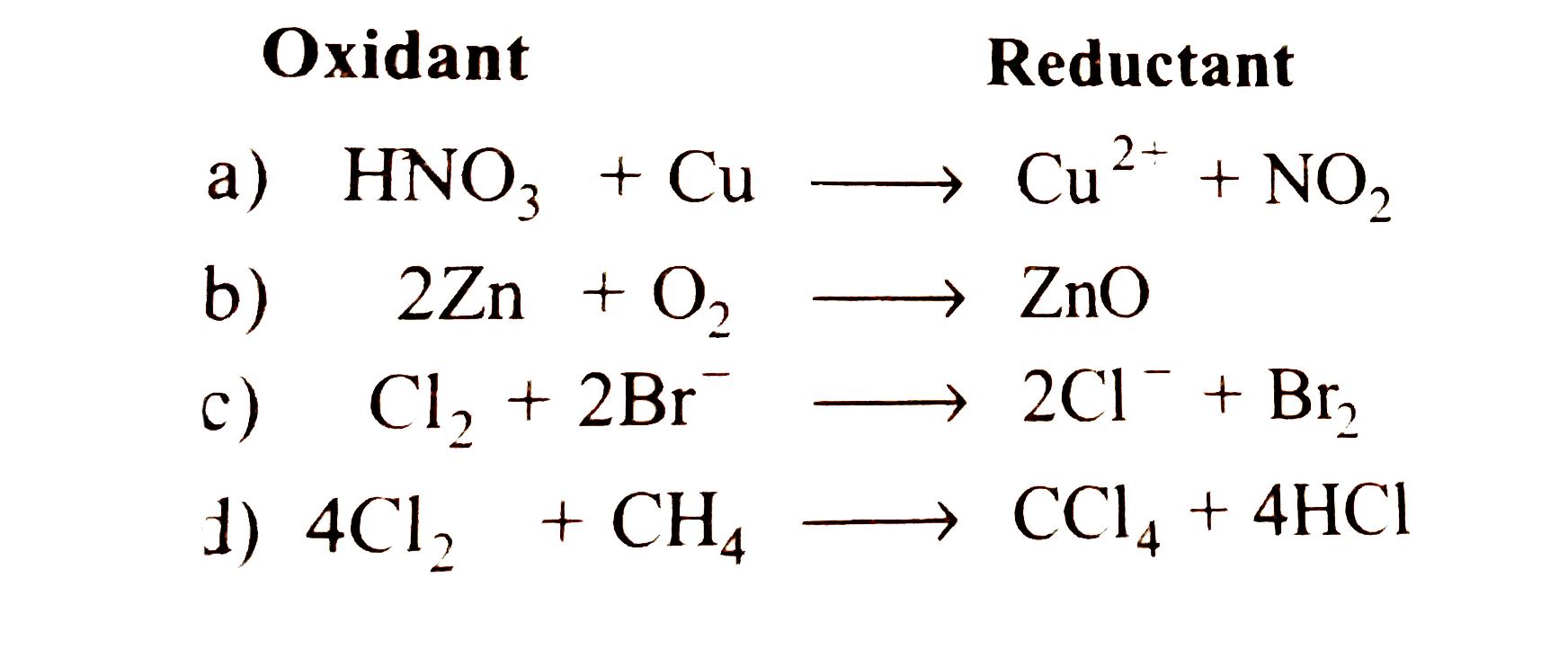Oxidation reaction involves loss of electrons, and reduction reaction involves gain of electrons. The reaction in which a species disproportinates into two oxidation states ( lower and higher) is called disproportionation reaction.
Which of the following statements is wrong?
An acidified K2Cr2O7 paper on being exposed to SO2 turns green.
Mercuric chloride and stannous chloride cannot exist as such.
Iron turning on addition to CuSO4 solution decolourises the blue colour.
[CuI4]2− is formed but [CuCl4]2− is not.
The correct Answer is:D
a. Cr2O2−7 (orange red) oxidises SO2 to SO2−4 and is itself reduced to Cr+3 (green).
Cr2O2−7+3H⊕+3SO2(Orange)→2Cr3++3SO2−4+4H2O(Green)
b. Both reacts together
+2HgCl2++2SnCl2→+1HgCl2(White ppt)⏐⏐
⏐
⏐↓++4SnCl4
+1Hg2Cl2++2SnCl2→2Hg(Grey)⏐⏐
⏐
⏐↓++4SnCl4
c. 0Fe++22CuSO4(Blue)→Fe2++0Cu
d. [CuCl4]2− is formed but [CuI4]2− is not.
Iөion reduces Cu2+ to +1C̲ and itself undergoes oxidation to form I2. However, CIө does not reduce Cu2+.
Topper's Solved these Questions
- BOOK - CENGAGE CHEMISTRYCHAPTER - REDOX REACTIONSEXERCISE - Exercises (Multiple Correct)32videos
REDOX REACTIONS
- BOOK - CENGAGE CHEMISTRYCHAPTER - REDOX REACTIONSEXERCISE - Exercises (Single Correct)91videos
REDOX REACTIONS
- BOOK - CENGAGE CHEMISTRYCHAPTER - REDOX REACTIONSEXERCISE - Exercise29videos
REDOX REACTIONS
- BOOK - CENGAGE CHEMISTRYCHAPTER - PURIFICATION OF ORGANIC COMPOUNDS AND QUALITATIVE AND QUANTITATIVE ANALYSISEXERCISE - Assertion Reasoning Type5videos
PURIFICATION OF ORGANIC COMPOUNDS AND QUALITATIVE AND QUANTITATIVE ANALYSIS
- BOOK - CENGAGE CHEMISTRYCHAPTER - S-BLOCK GROUP 1 - ALKALI METALSEXERCISE - Archives Subjective8videos
S-BLOCK GROUP 1 - ALKALI METALS
Similar Questions
Knowledge Check
- Question 1 - Select One
Oxidation reaction involves loss of electrons, and reduction reaction involves gain of electrons. The reaction in which a species disproportinates into two oxidation states ( lower and higher) is called disproportionation reaction.
Which of the following statements is correct?AAn element in the lowest oxidation state acts only as a reducing agent.BAn element in the highest oxidation state acts only as a reducing agent.CThe oxidation number of V is Rb4K(HV10O28)is+4.DThe oxidation number and valency of Hg in calomel is +1 - Question 2 - Select One
A reduction reaction involves
Aaddition of oxygenBaddition of nitrogenCaddition of hydrogenDNone of the above - Question 3 - Select One
Oxidation reaction involves loss of electrons, and reduction reaction involves gain of electrons. The reaction in which a species disproportinates into two oxidation states ( lower and higher) is called disproportionation reaction.
Which of the following is not a dispropotional reaction?AөOH+Br2→Brө+BrOө3BCu2O+2H⊕→Cu+Cu2++H2OC(CN)ө→CO2−3+NOө3D(CN)2+2өOH→CNө+CNOө+H2O
Oxidation and reduction process involves the transaction of electrons. Loss of electrons is oxidation and the gain of electrons is reduction. It is thus obvious that in a redox reaction, the oxidant is reduced by accepting the electrons and the reductant is oxidised by losing electrons. The reactions in which a species disproportionates into two oxidation states (lower and higher) are called disproportionation reactions. In electrochemical cells, redox reaction is involved, i.e., oxidation takes place at anode and reduction at cathode.
Which of the following reactions is/are correctly indicated?
 View Solution
View SolutionOxidation and reduction process involves the transaction of electrons. Loss of electrons is oxidation and the gain of electrons is reduction. It is thus obvious that in a redox reaction, the oxidant is reduced by accepting the electrons and the reductant is oxidised by losing electrons. The reactions in which a species disproportionates into two oxidation states (lower and higher) are called disproportionation reactions. In electrochemical cells, redox reaction is involved, i.e., oxidation takes place at anode and reduction at cathode.
Select the correct statement:View SolutionOxidation and reduction process involves the transaction of electrons. Loss of electrons is oxidation and the gain of electrons is reduction. It is thus obvious that in a redox reaction, the oxidant is reduced by accepting the electrons and the reductant is oxidised by losing electrons. The reactions in which a species disproportionates into two oxidation states (lower and higher) are called disproportionation reactions. In electrochemical cells, redox reaction is involved, i.e., oxidation takes place at anode and reduction at cathode.
The reaction Cl2→Cl−+ClO−3 is:View SolutionOxidation and reduction process involves the transaction of electrons. Loss of electrons is oxidation and the gain of electrons is reduction. It is thus obvious that in a redox reaction, the oxidant is reduced by accepting the electrons and the reductant is oxidised by losing electrons. The reactions in which a species disproportionates into two oxidation states (lower and higher) are called disproportionation reactions. In electrochemical cells, redox reaction is involved, i.e., oxidation takes place at anode and reduction at cathode.
Detennine the change in oxidation number of sulphur in H2SandSO2 respectively in the following reaction:
2H2S+SO2→2H2O+3SView SolutionOxidation and reduction process involves the transaction of electrons. Loss of electrons is oxidation and the gain of electrons is reduction. It is thus obvious that in a redox reaction, the oxidant is reduced by accepting the electrons and the reductant is oxidised by losing electrons. The reactions in which a species disproportionates into two oxidation states (lower and higher) are called disproportionation reactions. In electrochemical cells, redox reaction is involved, i.e., oxidation takes place at anode and reduction at cathode.
In the reaction:
I2+2S2O2−3→2I−+S4O2−6View Solution

